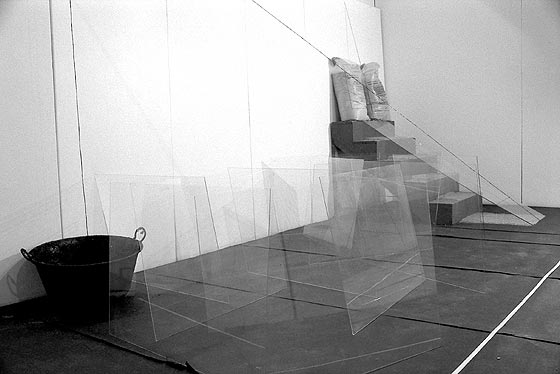Milkós Erdély’s oeuvre has been misevaluated and misinterpreted so many times that in one of his last works he did not simply justify his position but tried to use his topsy-turvy situation as a kind of ‘aesthetic catalyst’: he put a sign reading Doubt. Saturated solution on the side of a time-worn tin barrel. Just like when sugar crystals form along a twine hanging in sugary water, a piece of twine is hanging in the barrel in this work too. It can be understood as the line thrown in by fishermen fishing in ‘murky waters’, except that in this particular case what is caught on the hook is aesthetic quality itself.
The doubt that saturates the air around the artist and urges him to create an artwork presumably stems from the fact that Erdély’s works characterised by a penetrating presence stubbornly resist any attempts at conceptual categorisation, thus bringing a sense of unrest in people’s brains since they generally expect art to give them something they can relate to, while Erdély regards conjecture as more important.
“Once upon a time a thin fibre was attached to one particular point of the firmament, at an unreachable height. The other end of the thread hung down almost all the way to the surface of the ground. At times people, when they felt thus inclined, grabbed hold of the loose end of the thread and yanked away at it with force. Then, with a feeling of contentment, they declared that the thread would not let go and its attachment to the firmament was perfectly firm. They did not subject the thread to any special test after that and thus it survived intact. As time passed, only the lower end of the thread got smudged from hands regularly touching it. That is how the human concept of down-to-earth/ touchable developed.” (Conjecture II, 10/a)
